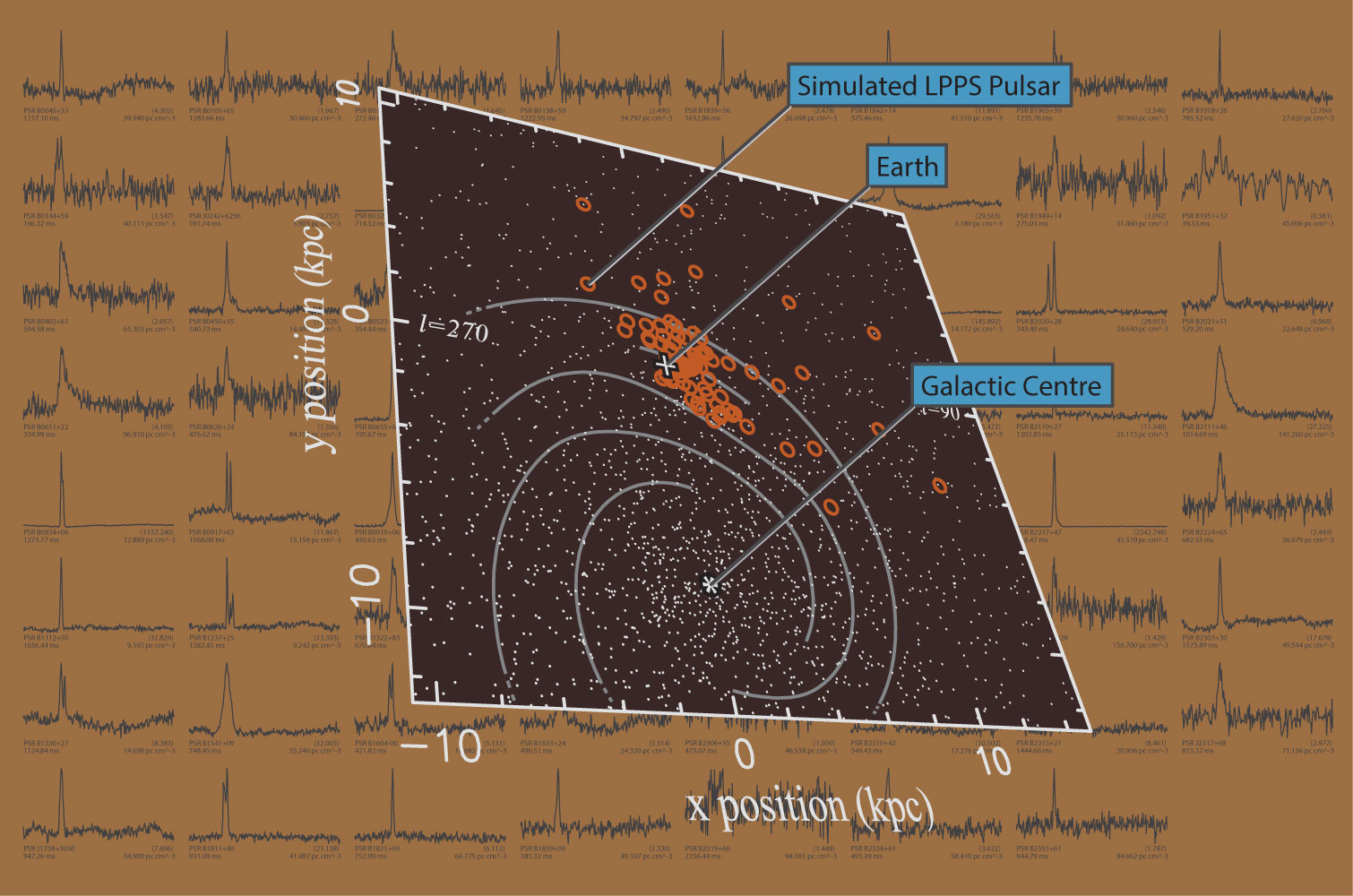Daily Image
24-10-2014The pulsar population detected with LPPS
| Submitter: | Joeri van Leeuwen |
| Description: | Last week, the paper describing the first two pulsar surveys with LOFAR appeared in A&A. In it, we report on the first low-frequency fast-radio burst limit (this AJDI) and the discovery of two new pulsars (a number that has much increased since, see this AJDI). The first survey, the LOFAR Pilot Pulsar Survey (LPPS), observed a large fraction of the northern sky and re-detected 65 previously known pulsars (background profiles in the image above). 54 of these were blind re-detections, a further 11 were found by folding at known pulsar periods. On completion LPPS was the deepest large-area survey in the 100 MHz regime to date. The 54 blind detections constitute the first low-frequency sample that is adequate in size to serve as input for a pulsar population model. We thus populated the modeled Galaxy with a population of pulsars that in van Leeuwen & Stappers (2010) best reproduced the survey results of 6 large surveys. In our simulation, 2.7 million pulsars formed throughout the Galaxy. Of these, 50,000 were above the death line at the present day and beamed toward Earth. 10% of those are shown as the white dots in the foreground panel of the image above; 9,000 are in the LPPS Field of View. For 1,200 of these, the scatter and dispersion broadening exceeds their rotational period, making them undetectable. Of the remaining 8,000 pulsars, 80+-20 are bright enough to be detected in LPPS (circles in the foreground panel in the image). That is in reasonable agreement with the actual number of blind detections of 54. Some of the difference between these numbers could be in either the modeled survey (e.g., remaining incomplete understanding of the incoherent-addition of these commissioning era data) or the modeled population (e.g., the low-frequency spectrum turn-over behaving differently than simulated). Overall, these simulations confirm that our best pulsar population models (van Leeuwen & Stappers 2010) can accurately predict low-frequency surveys. |
| Copyright: | JvL |
| Tweet |  |
